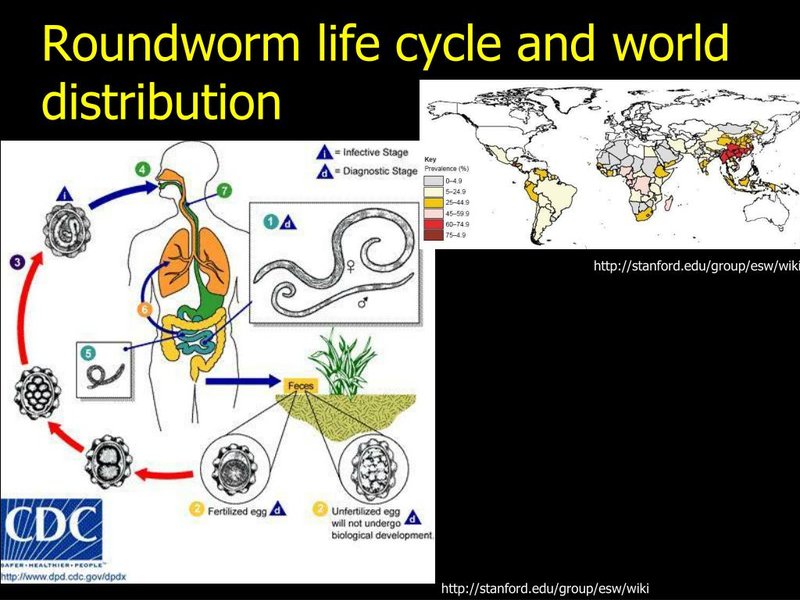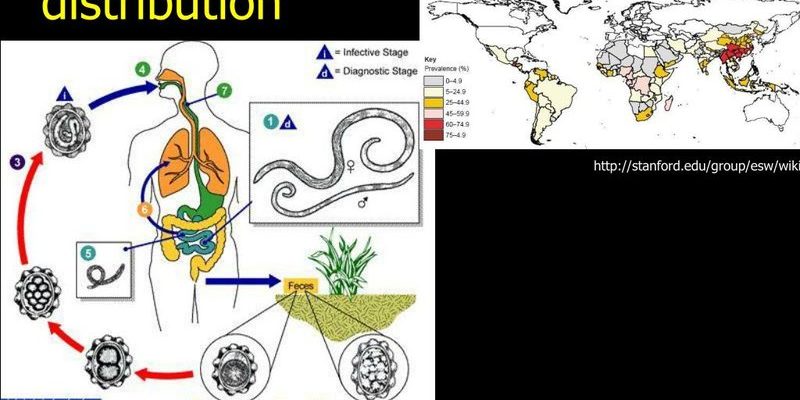
You might be surprised to learn that roundworms come in thousands of species, each adapted to live in various environments. Imagine them as nature’s tiny survivors, thriving in conditions that many other organisms wouldn’t dare approach. Let’s dig deeper into the world of roundworms, their habitats, and how they spread across different regions of the globe.
What Are Roundworms?
Roundworms are elongated, cylindrical organisms that belong to the phylum Nematoda. They can be as small as a few millimeters or as long as several meters, depending on the species. Most are microscopic, invisible to the naked eye, but they play crucial roles in their ecosystems.
These creatures are often found in soil, where they help break down organic material. This process contributes to nutrient cycling, making the soil more fertile. But don’t be fooled into thinking they only live underground. You can find roundworms in freshwater, saltwater, and even in the guts of larger animals, where some act as parasites.
In fact, some roundworms are notorious for causing diseases in humans and animals, like the hookworm that can affect people living in tropical regions. Understanding their range and distribution can help us manage these health risks effectively.
The Global Distribution of Roundworms
Roundworms are incredibly adaptable, which is why they can be found in almost every environment on Earth. They thrive in marine environments, freshwater ecosystems, and terrestrial habitats. Here’s a look at their distribution around the globe:
- Marine Environments: Many species live in oceans, often dwelling in sediment where they play a role in maintaining marine ecosystems.
- Freshwater Sources: Lakes, rivers, and ponds are home to various roundworm species that contribute to the ecosystem by breaking down organic matter.
- Soil: Terrestrial roundworms can be found in soil worldwide, where they are vital for soil health and nutrient cycling.
- Parasitic Species: Some roundworms have adapted to living inside hosts, including humans, and are distributed across various geographical regions.
Their presence indicates healthy ecosystems, but it also shows the delicate balance they maintain. This adaptability makes them particularly fascinating and, in some cases, a challenge for public health.
Roundworms and Their Habitats
Roundworms have adapted to thrive in a variety of habitats. Each species may prefer different environments, depending on factors like moisture and temperature.
For instance, some roundworms love the damp, nutrient-rich soil of rainforests, where they help decompose fallen leaves and organic matter. Others might be found in the icy waters of the Antarctic, showcasing their incredible adaptability.
In urban areas, nematodes can still be found, albeit in lower concentrations due to environmental changes. They can inhabit gardens, parks, and even the soil in your backyard. Here’s a quick overview of the types of habitats they prefer:
- Tropical Regions: Rich in biodiversity, these areas are teeming with various roundworm species.
- Temperate Zones: You’ll find multiple species here, often in gardens and forests.
- Deserts: Few species can endure this harsh environment, yet some have adapted to survive.
- Extreme Environments: From ocean depths to hot springs, certain roundworms can thrive in places most other life forms cannot.
Each habitat harbors a unique composition of roundworm species, underscoring how adaptable and resilient they are.
Roundworms as Parasites
While many roundworms are beneficial, some take a notorious turn by becoming parasites. These organisms live off hosts, which can be anything from plants to animals, including humans.
Parasitic roundworms are often found in tropical and subtropical areas, where they can lead to serious health issues. For example, Ascaris lumbricoides, a type of roundworm, infects humans and can cause abdominal discomfort and malnutrition.
Here are a few more examples of parasitic roundworms:
- Hookworms: Found primarily in warm climates, these can enter the body through skin contact and cause anemia.
- Filariasis: Transmitted through mosquito bites, this can lead to severe swelling and disfigurement.
- Heartworms: Primarily affecting dogs and cats, these live in the heart and lungs, leading to serious health issues.
Understanding the distribution of these parasites is crucial for health professionals and communities, especially in managing outbreaks and improving public health.
Monitoring and Research on Roundworms
Researching roundworm populations helps scientists understand their ecological roles and how they can impact human health. Studies are increasingly focusing on mapping their distribution and monitoring changes over time.
For instance, scientists might collect soil samples from different regions to identify the roundworm populations present. By analyzing this data, they can track how climate change or deforestation affects these organisms.
Emerging technologies, such as DNA sequencing, allow for more precise identification of species and can help map their distributions more accurately. Insights from this research can guide conservation efforts and help manage agricultural health, as roundworms play crucial roles in nutrient cycling.
The Impact of Climate Change on Roundworm Distribution
Climate change poses new challenges for roundworms as their habitats are affected by shifts in temperature and moisture levels.
For instance, increased rainfall can boost roundworm populations in certain areas, while droughts can reduce their numbers. Changes in land use, like deforestation or urbanization, also impact where and how these organisms thrive.
Understanding how roundworms respond to these environmental changes is essential. It not only helps in predicting potential health risks but also aids farmers in managing soil health and crop productivity.
As we delve deeper into the impacts of climate change, monitoring roundworm populations becomes increasingly important for ecosystem health and biodiversity conservation.
Roundworms may seem small and insignificant, but their impact on our planet is vast and essential. From maintaining soil health to serving as critical indicators of environmental changes, these organisms play a vital role in our ecosystems.
Their documented range and distribution showcase their adaptability and resilience, making them fascinating subjects for ongoing research. Understanding how roundworms function and where they thrive helps us appreciate the hidden intricacies of life on Earth. So, next time you think about these tiny creatures, remember—they’re not just small; they’re vital to the very fabric of our ecosystems!

